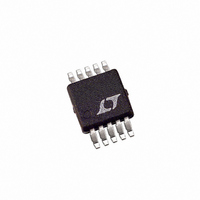LTC4053EMSE-4.2 Linear Technology, LTC4053EMSE-4.2 Datasheet - Page 12

LTC4053EMSE-4.2
Manufacturer Part Number
LTC4053EMSE-4.2
Description
IC CHARGER BATTERY USB 10-MSOP
Manufacturer
Linear Technology
Datasheet
1.LTC4053EMSE-4.2PBF.pdf
(16 pages)
Specifications of LTC4053EMSE-4.2
Function
Charge Management
Battery Type
Lithium-Ion (Li-Ion)
Voltage - Supply
4.25 V ~ 6.5 V
Operating Temperature
-40°C ~ 85°C
Mounting Type
Surface Mount
Package / Case
10-TFSOP, 10-MSOP (0.118", 3.00mm Width) Exposed Pad
Lead Free Status / RoHS Status
Contains lead / RoHS non-compliant
Available stocks
Company
Part Number
Manufacturer
Quantity
Price
Company:
Part Number:
LTC4053EMSE-4.2
Manufacturer:
LT
Quantity:
5 321
Part Number:
LTC4053EMSE-4.2
Manufacturer:
LINEAR/凌特
Quantity:
20 000
Part Number:
LTC4053EMSE-4.2#PBF
Manufacturer:
LINEAR/凌特
Quantity:
20 000
Company:
Part Number:
LTC4053EMSE-4.2#TR
Manufacturer:
VISHAY
Quantity:
912
Part Number:
LTC4053EMSE-4.2#TR
Manufacturer:
LT/凌特
Quantity:
20 000
Part Number:
LTC4053EMSE-4.2#TRPBF
Manufacturer:
LT/凌特
Quantity:
20 000
LTC4053-4.2
APPLICATIO S I FOR ATIO
NTC Trip Point Errors
When a 1% resistor is used for R
the 50°C trip point is determined by the tolerance of
the NTC thermistor. A typical 10k NTC thermistor has
a ±10% tolerance. By looking up the temperature
coefficient of the thermistor at 50°C, the tolerance error
can be calculated in degrees centigrade. Consider the
Vishay NTHS0603N02N1002J thermistor which has a
temperature coefficient of –3.3%/°C at 50°C. Dividing
the tolerance by the temperature coefficient, ±10%/
(3.3%/°C) = ±3°C, gives the temperature error of the hot
trip point.
The cold trip point is a little more complicated because its
error depends on the tolerance of the NTC thermistor and
the degree to which the ratio of its value at 0°C and its value
at 50°C varies from 7 to 1. Therefore, the cold trip point
error can be calculated using the tolerance, TOL, the
temperature coefficient of the thermistor at 0°C, TC
(in %/°C), the value of the thermistor at 0°C, R
the value of the thermistor at 50°C, R
For example, the Vishay NTHS0603N02N1002J thermistor
with a tolerance of ±10%, TC of –4.5%/°C, and R
R
If a thermistor with a tolerance less than ±10% is used, the
trip point errors begin to depend on errors other than
thermistor tolerance including the input offset voltage of
the internal comparators of the LTC4053 and the effects of
internal voltage drops due to high charging currents.
12
HOT
Temperature Error (°C) =
Temperature Error (°C) =
of 6.89, has a cold trip point error of:
U
= –1.8°C, +2.5°C
U
⎛
⎜
⎝
⎛
⎜
⎝
1
1 0 10
+
±
7
TOL R
HOT
7
W
.
HOT
, the major error in
•
• .
R
– .
. The formula is:
TC
6 89 1 100
COLD
HOT
4 5
–
U
–
COLD
⎞
⎟
⎠
1 100
⎞
⎟
⎠
•
•
COLD
, and
/
Constant-Current/Constant-Voltage/
Constant-Temperature
The LTC4053 uses a unique architecture to charge a
battery in a constant-current, constant-voltage, constant-
temperature fashion. Figure 1 shows a simplified block
diagram of the LTC4053. Three of the amplifier feedback
loops shown control the constant-current, CA, constant-
voltage, VA, and constant-temperature, TA modes. A
fourth amplifier feedback loop, MA, is used to increase the
output impedance of the current source pair, M1 and M2
(note that M1 is the internal P-channel power MOSFET). It
ensures that the drain current of M1 is exactly 1000 times
greater than the drain current of M2.
Amplifiers CA, TA, and VA are used in three separate
feedback loops to force the charger into constant-current,
temperature, or voltage mode, respectively. Diodes, D1,
D2, and D3 provide priority to whichever loop is trying to
reduce the charge current the most. The outputs of the
other two amplifiers saturate low which effectively re-
moves their loops from the system. When in constant-
current mode, CA servos the voltage at the PROG pin to be
precisely 1.50V (or 0.15V when in trickle-charge mode).
TA limits the die temperature to approximately 105°C
when in constant-temperature mode and the PROG pin
voltage gives an indication of the charge current as dis-
cussed in “Programming Charge Current”. VA servos its
inverting input to precisely 2.485V when in constant-
voltage mode and the internal resistor divider made up of
R1 and R2 ensures that the battery voltage is maintained
at 4.2V. Again, the PROG pin voltage gives an indication of
the charge current.
In typical operation, the charge cycle begins in constant-
current mode with the current delivered to the battery
equal to 1500V/R
LTC4053 results in the junction temperature approaching
105°C, the amplifier (TA) will begin decreasing the charge
current to limit the die temperature to approximately
105°C. As the battery voltage rises, the LTC4053 either
returns to constant-current mode or it enters constant-
voltage mode straight from constant-temperature mode.
PROG
. If the power dissipation of the
4053fa









